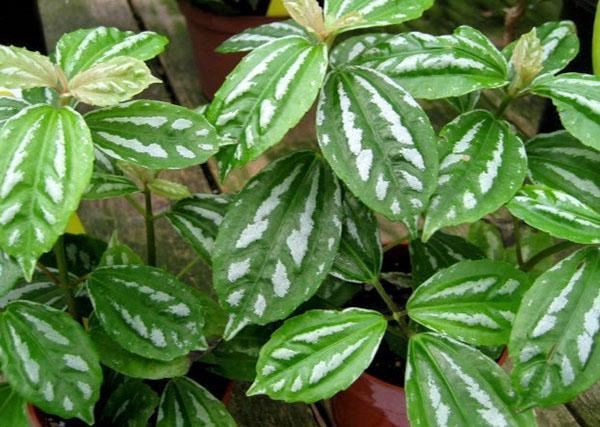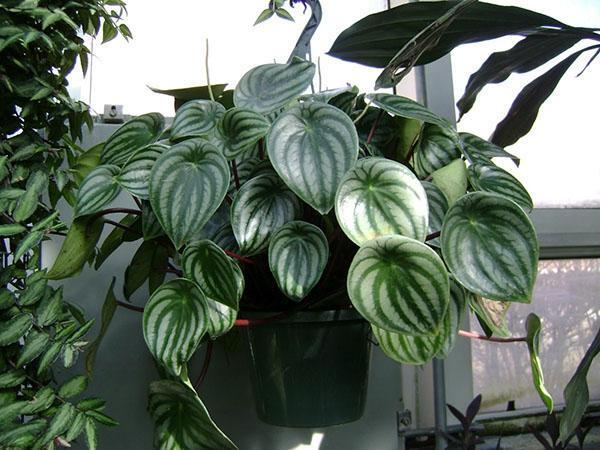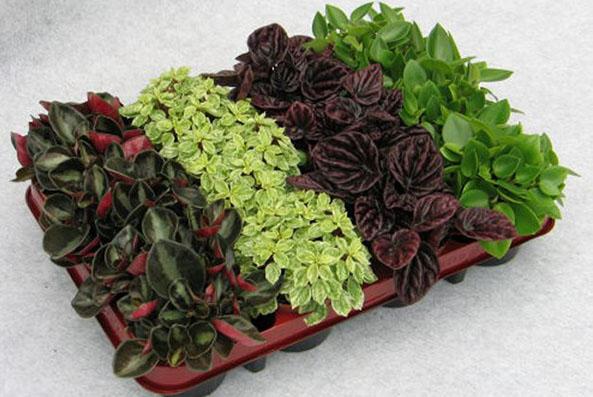Breeding methods for room peperomia: by seeds, cuttings or dividing the bush
 Peperomia Is a perennial herb. Simple and affordable methods of propagation of peperomia contributed to the spread of this plant. Her homeland is the tropical rainforests of South America. Belongs to the Pepper family. The name of the plant in translation from Greek means "the same" or "similar". More than 1000 species of this plant are currently known. Many of them are distinguished by high decorative qualities, and therefore are widely used for growing both indoors (about 30 species), as in botanical gardens.
Peperomia Is a perennial herb. Simple and affordable methods of propagation of peperomia contributed to the spread of this plant. Her homeland is the tropical rainforests of South America. Belongs to the Pepper family. The name of the plant in translation from Greek means "the same" or "similar". More than 1000 species of this plant are currently known. Many of them are distinguished by high decorative qualities, and therefore are widely used for growing both indoors (about 30 species), as in botanical gardens.
general description

 Among the species that are suitable for growing at home, shriveled peperomia stands out. The homeland of the flower is Brazil. Under natural conditions, this species is a typical epiphyte that grows on trees, in the shade, under a forest canopy, on rotting trunks, as well as peaty soils. This determines the features of the reproduction of peperomia and its cultivation. It should be noted that the plant receives all the nutrients not only from the soil, but also from the moisture supplied along with precipitation.
Among the species that are suitable for growing at home, shriveled peperomia stands out. The homeland of the flower is Brazil. Under natural conditions, this species is a typical epiphyte that grows on trees, in the shade, under a forest canopy, on rotting trunks, as well as peaty soils. This determines the features of the reproduction of peperomia and its cultivation. It should be noted that the plant receives all the nutrients not only from the soil, but also from the moisture supplied along with precipitation.
In summer, peperomia prefers moderate watering, and in winter it is advisable to water the plant extremely rarely in order to avoid stagnation of moisture.
In this case, the water should be soft and at room temperature. It is very important to avoid over-watering, as this will in most cases lead to leaf fall.
Peperomia: reproduction and transplant
 The transplant must be carried out annually in the spring until the plant is three years old. In the spring, its growth is aggravated, which entails an increase in growth. For transplant, it is advisable to choose small potsto avoid improper plant development. Adult specimens should be transplanted no more than once every couple of years.
The transplant must be carried out annually in the spring until the plant is three years old. In the spring, its growth is aggravated, which entails an increase in growth. For transplant, it is advisable to choose small potsto avoid improper plant development. Adult specimens should be transplanted no more than once every couple of years.
If you notice that there is stagnation in the growth of the plant, then you should check the condition of the roots, since it is highly likely that the peperomia needs a larger pot.
Reproduction by dividing the bush peperomia tolerates quite easily, and therefore this method is the simplest and most popular. It is recommended for novice growers to apply reproduction precisely by dividing the bush so that the result meets expectations. Dividing a bush is not particularly difficult. It is enough to carefully separate the roots from each other and transplant each into a separate dish. This plant will only start to grow better, since the root system will have enough free space.
To avoid stagnation of moisture in the soil, it is recommended to try on drainage when peperomia propagates. When the plant is removed from the pot, it must be shaken slightly to clear the roots of the soil. After the plant has already been planted in the ground, it is advisable to keep it away from direct sunlight for about a week.This will help the root system quickly get used to new conditions without much stress. It should be noted that with this method of propagation, the plant can be fertilized.
Seed propagation
 When it comes to a plant such as peperomia, seed reproduction in indoor conditions is practically very difficult, since its seeds are microscopic in size. However, if we consider this method, then with the proper skills, seeds may well be an excellent option. They should be planted at a temperature of 24-25 ° C in an ordinary mixture without sprinkling with earth. Cookware with seeds should be stored in a dark and warm enough place. Immediately after the emergence of seedlings, they must be dived and transplanted into another pot.
When it comes to a plant such as peperomia, seed reproduction in indoor conditions is practically very difficult, since its seeds are microscopic in size. However, if we consider this method, then with the proper skills, seeds may well be an excellent option. They should be planted at a temperature of 24-25 ° C in an ordinary mixture without sprinkling with earth. Cookware with seeds should be stored in a dark and warm enough place. Immediately after the emergence of seedlings, they must be dived and transplanted into another pot.
Propagation by cuttings
 In the spring-summer period, propagation by stem cuttings can be chosen for peperomia. To do this, pinch off the top of the head. To root the stalk, plant it in a mixture of peat, leafy earth and sand. It is more desirable to use a special container-greenhouse as dishes. Thanks to this, you can easily provide the plant with the necessary conditions. The optimum temperature is + 24-25 ° С.
In the spring-summer period, propagation by stem cuttings can be chosen for peperomia. To do this, pinch off the top of the head. To root the stalk, plant it in a mixture of peat, leafy earth and sand. It is more desirable to use a special container-greenhouse as dishes. Thanks to this, you can easily provide the plant with the necessary conditions. The optimum temperature is + 24-25 ° С.  The entire process will take at least three weeks. When the cutting takes root, it can be transplanted into a small pot.
The entire process will take at least three weeks. When the cutting takes root, it can be transplanted into a small pot.
Peperomia loves loose soil. It should be neutral or slightly acidic. If you use too dense soil, then the roots of the plant can rot.
 Reproduction of peperomia by leaf cuttings is another common method that is simple. To do this, you need to take a leaf with a short petiole (it should have one or three nodes), then plant it in a special mixture (you can use wet, but not wet sand). For the rest, the same steps should be repeated as with the cuttings method. It is advisable to keep the air humidity at a high level.
Reproduction of peperomia by leaf cuttings is another common method that is simple. To do this, you need to take a leaf with a short petiole (it should have one or three nodes), then plant it in a special mixture (you can use wet, but not wet sand). For the rest, the same steps should be repeated as with the cuttings method. It is advisable to keep the air humidity at a high level.
Everything is fine, only in the very first photo of Pylaeus.